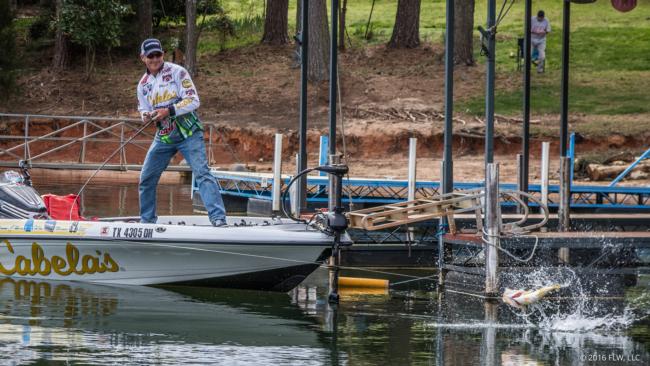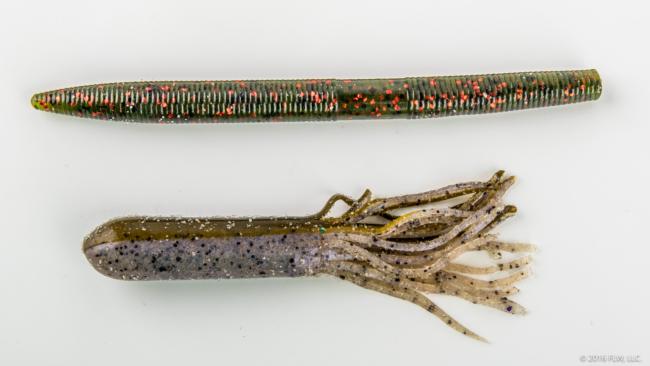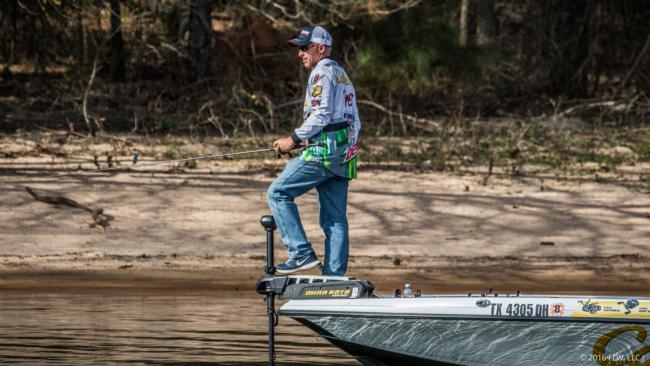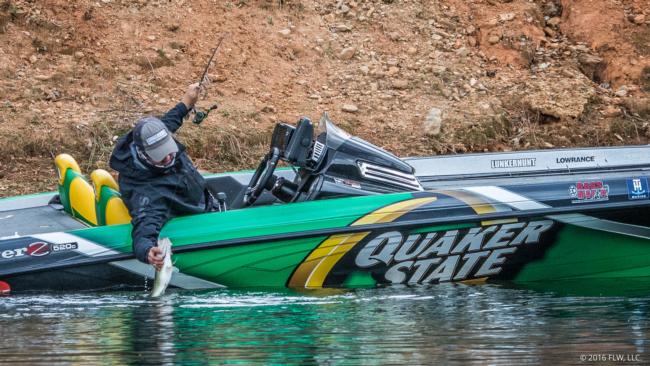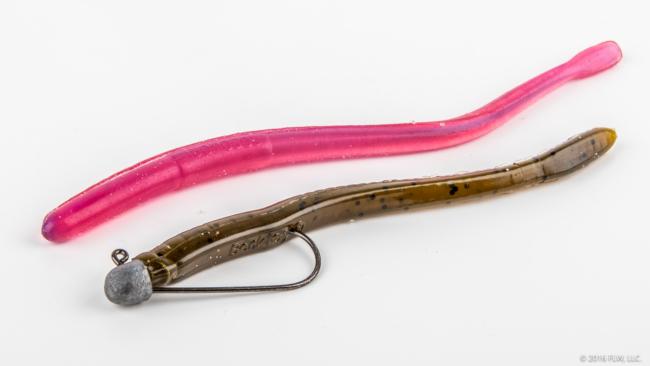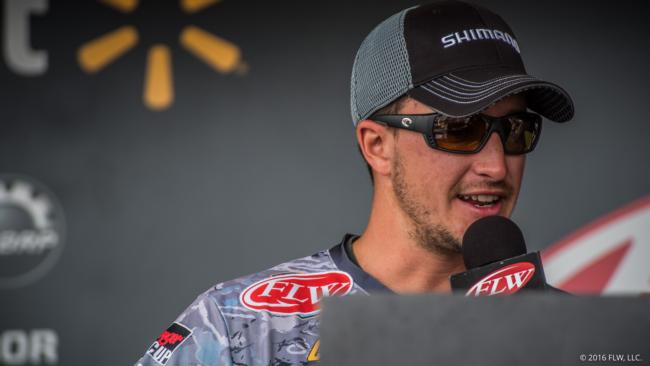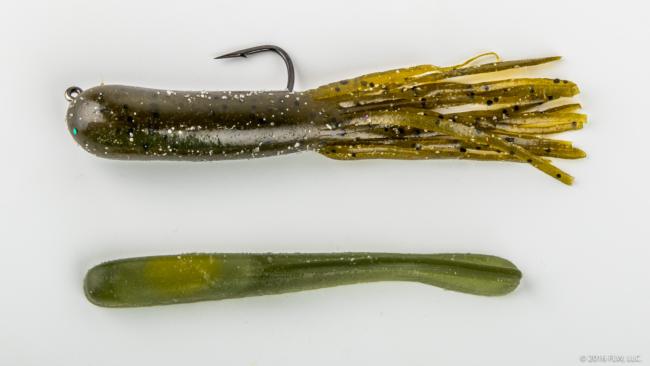Fishing 101: Sight-Fishing
How three of the best do it for largemouths, spotted bass and smallmouths.
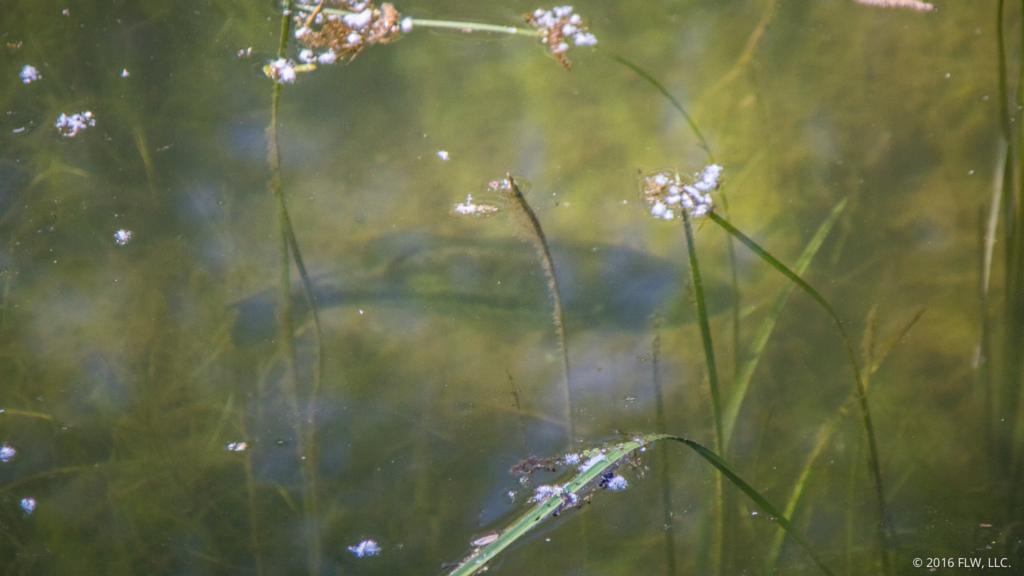
(6/27/2016 – Editors Note: Bed-fishing for smallmouth bass played a big role in the 2016 Walmart FLW Tour event on Lake Champlain this past week. In most of the country the bass are postspawn, but cold fronts pushed back the spawn in Upstate New York. Below you will find great info on how to fish for spawning largemouth, spotted and smallmouth bass.)
As peach trees and dogwoods begin blooming across the South, it can only mean one thing – spring is here. For bass fishermen this translates into hundreds of bass making their annual push to the shallows looking for love.
While some of the best fishing of the year is within a cast away now, it’s sometimes a daunting task to entice bites from fish that can be fickler than usual. Fear not; we met up with three of the best in the business at sight-fishing to cover all the things you need to know when it comes to spotting a fish and catching it.
Largemouths
Three-time Angler of the Year winner Clark Wendlandt and Quaker State pro Matt Arey relish fishing in the spring and are two of the best sight fishermen.
“When you’re sight-fishing, you’re not actually casting like you normally do – not that you can’t blind cast around – but you are actually looking for fish,” says Wendlandt. “You’re more or less hunting in shallow water and need to pay attention to everything going on around you.”
“Stealth is really the biggest factor when sight-fishing,” Arey adds. “A lot of people make the mistake of cruising down the bank and spooking a fish off a bed and just automatically think it’s not catchable. Don’t disregard that fish just because it swam off. That’s probably one of the biggest mistakes people make this time of year.”
Where To Find Them
Finding fish that are preparing to spawn is relatively easy. Water temperature is one of the most important factors and will help guide you in the right direction. Once the water creeps into the low 60-degree range, bass will be up on the bank looking to nest.
“Bass will bed in the same places that you’d normally fish for them if you couldn’t see them,” says Wendlandt. “Holes near grass mats, docks, wood and rock all make ideal spawning areas. You have to pay extra attention around cover like that because the fish will often slide off into the cover and you may barely see the fish slip away.”
The backs of pockets, small creeks or shallow flats on the north side of the lake will warm the quickest and are perfect starting points. Any cover in the area with a hard bottom is a prime bedding area.
Bed Baits
Wendlandt’s go-to bait for sight-fishing is a Texas-rigged Strike King Tube with a 3/0 hook and 3/16- to ¼-ounce weight depending on depth. He runs it on a 7-foot, 2-inch, medium-heavy Cabela’s baitcasting rod and spools up 15-pound-test fluorocarbon. If the cover dictates a heavier setup, Wendlandt will beef up everything.
“I really like the tube because it’s compact and those tentacles wave around a little even after you stop moving the bait,” Wendlandt explains. “A lot of times fish will barely grab the bait, and because the tube is so compact, you’ll usually get a good hook in them.”
For Arey, a wacky-rigged Lunkerhunt Lunker Stick (coffee red/black flake or pilsner nitro tip) is the bait of choice. He prefers to rig it with an o-ring in the middle to keep the bait on longer and he also likes to run it weightless – unless the bed is deeper and he wants the bait to drop quickly.
Arey runs a 7-foot, medium-light Okuma Helios spinning rod with a matching Helios reel spooled with 15-pound-test P-Line TCB braid. His leader is 8- or 10-pound-test P-Line Ultimate Fluorocarbon and he caps it off with a 1/0 Gamakatsu Aaron Martens TGW Drop Shot Hook.
Both pros note that having a selection of other baits can be essential. Shaky heads, drop-shots and Texas rigs matched with worms, craws and soft-plastic minnow imitations are also great choices.
Natural colors will almost always get bit faster than non-traditional colors such as white. Even so, carry a few oddball colors for improved visibility under murky water, and also to show fish something different – which can pay off on heavily pressured bodies of water.
Tactics To Try
“When I go in a pocket looking for spawning fish, I like to cast that Lunker Stick out in front of the boat while I look,” says Arey. “Sometimes you’ll get a few extra bites that way, or even locate one on a bed you couldn’t see. If I’m cruising down the bank and see a fish swim off a bed, I’ll watch it to see how far it goes. If it only swims 20 feet or so I’ll make note of where the bed was with a visual marker on the shoreline and keep fishing through the rest of the pocket.
“After that, I turn around and head back [to the previous bed]. Usually after a few minutes the fish will settle down and return to the bed. That’s when I like to get a good cast length from the bed to where I may not even be able to see the fish or bed. I’ll make some casts past the bed with the wacky-rigged Lunker Stick and let it fall down to it. If I make 10 casts blind and feel comfortable that eight of those went through the bed then I’ll pick up my Power-Poles and reposition so that I can see the bed.
Arey notes that while cruising through spawning areas, a fisherman should keep in mind the angle of the sun to maximize the distance down the bank he can see. The same holds true when positioning a boat for a bedding fish.
“I’d say that in the first five minutes you can tell if a fish is catchable,” continues Arey. “Generally, the tighter the fish stays to the bed, the easier it is to catch. Remember that each new fish is different and just because something worked well on the last one doesn’t mean the next one will react the same way.”
Wendlandt echoes Arey when it comes to reading and setting up on fish.
“The best way I know to approach a bass on a bed is to set up as far away as you can while still being able to see the fish,” Wendlandt says. “Power-Poles are critical for this type of fishing. They really help get the boat positioned properly and allow you to watch the bass without worrying about boat control.
“If the fish spooks off, don’t cast to it,” adds Wendlandt. “You’ll just spook it even more. Patience is so critical. Let that fish settle down and return to the bed before making a cast. You need to spend some time observing the fish to see how it reacts not only your bait, but also other things like bream or other bait swimming near the bed.
“Some fish want the bait in a certain spot in the bed for them to bite. Others want the bait sitting still, falling or moving quickly. That’s why you need to be observant and keep a few different baits with you.”
Reading the fish is the whole key to catching them. If you’ve been deadsticking the bait on the bed with no reaction from the fish and you go to reel in and the fish charges, then consider sharp, quick hops of the bait. If the fish becomes more aggressive, then you can pick up the frequency of your casts. On the flip side, if you are moving the bait quickly and the bass doesn’t respond or leaves, slow things down. Like all things fishing, there is no better substitute than time on the water to learn the art of sight-fishing.
Spotted Bass
While there aren’t many differences between spots and their largemouth cousins, Arey still points out some notes of interest when targeting spotted bass.
Where To Find Them
According to Arey, spots will generally spawn in the same areas as the largemouths, anywhere between 5 to 10 feet deep. They tend to favor steeper banks with rock shelves that provide a flat area to spawn. This holds especially true in lakes that contain blueback herring.
“I don’t really know why, but in lakes with bluebacks I’ve noticed the spots will spawn out deep,” Arey says. “I’ve seen them out to close to 15 feet deep if the water clarity is right. That’s why they like those rock shelves; it’s a perfect place to spawn out closer to deep water.
“Now, in some lakes like Norman I’ve seen them spawn almost right up on the bank like largemouths.”
Bed Baits
When it comes to targeting spawning spotted bass, Arey again reaches for the Lunker Stick. However, he will usually add a nail weight to help the bait fall faster for fish that are bedded deeper. The Quaker State pro also likes to keep a 4-inch Lunkerhunt Limit Worm rigged on a jig head handy for spotted bass situations. Drop-shots with finesse worms are also a great bet.
“Spots tend to be more aggressive than largemouths,” Arey says. “I once had a spot hit a 3-inch bait close to 30 times before I caught it. And when I say hit it, I mean it knocked about 4 feet of slack in my line and I wouldn’t hook it.
“Spots have a tendency to try and kill the bait, where a largemouth will usually just grab it. Because of this I like to stick with more compact baits or downsize my normal offerings.”
Tactics To Try
Because of their aggressive nature, spotted bass tend to be slightly easier to entice than a largemouth. Reading the fish and proper positioning are still keys to hooking up. If the fish is just pecking at the bait, don’t hesitate to downsize until it begins to grab the bait. From there it shouldn’t take long to set the hook.
Smallmouths
For advice on tracking down smallmouths, we turned to Walmart FLW Tour rookie Chris Johnston, who has spent years chasing browns all over the northern U.S. and Canada.
Location
“Around home we have a lot of lakes with rock and weeds in them and you’ll find those fish spawning around the pockets within the weeds on a hard bottom,” explains Johnston. “Pockets and coves are great places to check out on smaller lakes. On larger bodies of water, like the Great Lakes, shallow flats on the main lake can hold tons of smallmouths during the spawn.
“I think prime time for smallmouths is when the water temperature reaches 64 or 65 degrees. That’s when you’ll really find them laying all over.”
Johnston likes to target transition areas such as sand to rock, big rock to smaller rocks or weeds to sand/rock for bedding areas. On the Great Lakes, especially, there can be miles of pure sand and then a rock transition where the fish will load up.
“I’ve caught smallmouth anywhere from one foot all the way down to 20 feet. A lot of people don’t think they spawn that deep, but in clear water they absolutely will,” adds Johnston.
Baits
A tube (3 to 3 ½ inches) is what Johnston reaches for when it comes time to bed-fish. He also prefers natural colors such as green pumpkin. Johnston throws it on a 7-foot, 3-inch G. Loomis NRX spinning rod with 8-pound-test Power Pro braid and an 8- or 10-pound-test fluorocarbon leader. On the business end he prefers a ¼- to 3/8-ounce tube jighead that goes inside the bait.
If the fish don’t go for the tube, a drop-shot is his backup. He’ll run the same rod and line and opts for a Jackall Crosstail Shad for his bait.
Tactics
“If you find one smallmouth on a bed, chances are good that there are a bunch more nearby,” says Johnston. “I like to kick the trolling motor on high and just look because the fish usually stick out like sore thumbs, so they aren’t too hard to see.
“I think a lot of people make the mistake of staying too far away from the bed. Smallmouths are pretty aggressive and I’d say a lot of people waste too much time trying to make the perfect cast to them.
“I get right up on them. Smallmouths are actually pretty easy to catch off beds. It usually doesn’t take more than a few casts. And unlike a largemouth, where you need to be in the bed to get it to bite, a smallmouth will chase a bait sometimes 10 feet from the bed. So if you make a bad cast, don’t reel in right away.”
Spring truly offers some of the best fishing of the year with a great chance at hooking into a true giant. Matching wits with a spawning bass can be some of the most rewarding, yet frustrating things you’ll do. Keep these tips in mind the next time you hit your favorite body of water and you too can enjoy the fruits of spring.
Seeing The Bass
Finding fish is job one, so it’s essential that an angler has a quality pair of polarized sunglasses. Costa’s 580 lens is one of the clearest on the market and is offered in a wide range of frame sizes and styles to fit any angler and there are many color options in the 580 lens.
